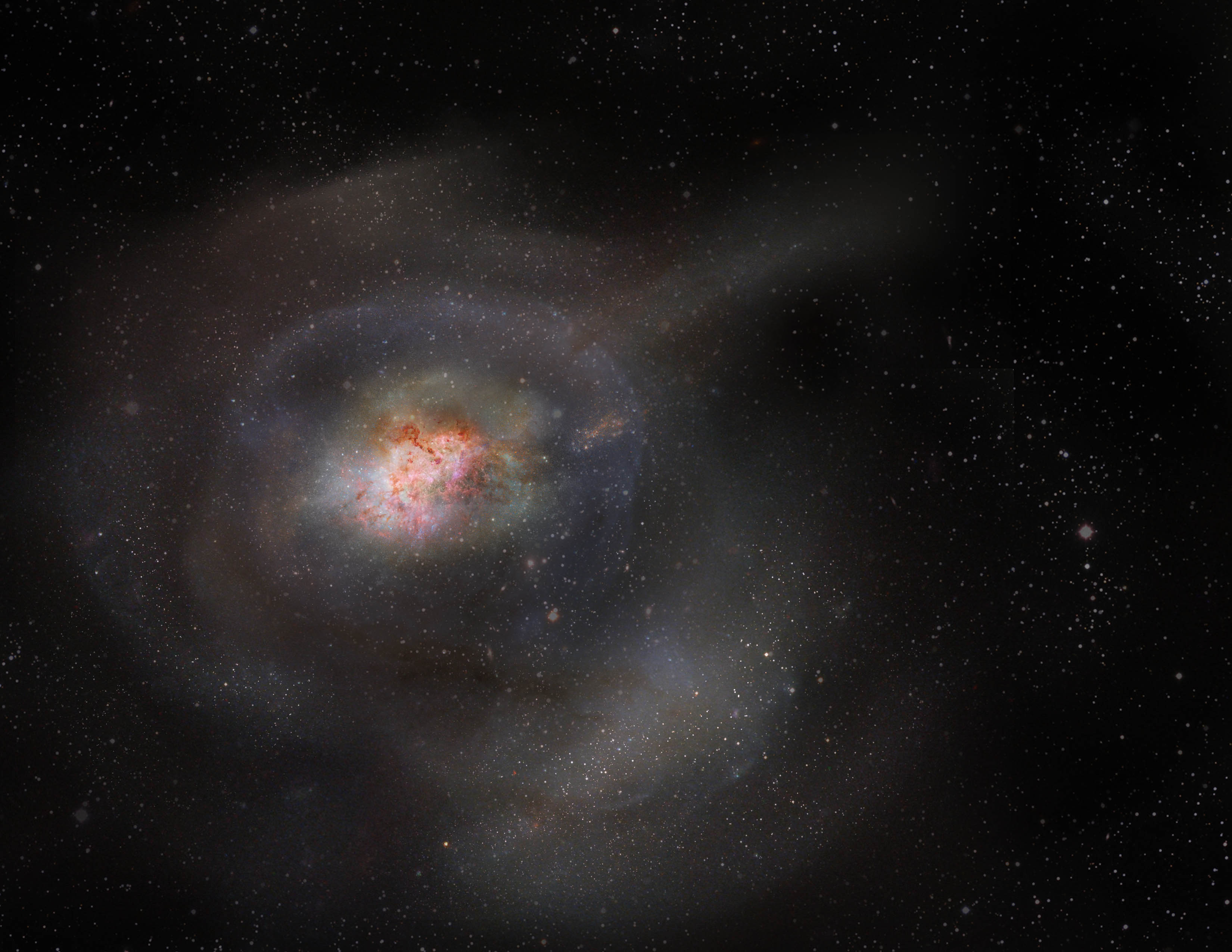These rare galaxies aren't forming stars like they should, and scientists don't know why
Post-starburst galaxies seem to be behaving very unusually.

There's something weird going on in the universe, specifically in rare galaxies.
Until now, scientists have worked under the belief that post-starburst galaxies (PSBs), or galaxies born from violent galactic collisions that are no longer forming stars, expel gas and dust and remain dormant, or unable to produce new stars. But new observations by the Atacama Large Millimeter/submillimeter Array (ALMA) in Chile indicate that PSBs actually retain much of their gas after the merger, which would typically fuel star formation.
But this creates quite a contradiction, as, even when they keep their gas, PSBs don't form stars.
Video: Dwarf galaxy’s black hole triggers star formation
When two galaxies collide violently, there's usually a burst of star formation. But in rare instances,a galactic merger results in a PSB, where there’s little to no star formation at all. Scientists have theorized that the reason why is that the gas and dust required to birth stars is expelled from PSBs. But, according to the ALMA data in this new study, while PSBs compress their gas, which should be sufficient fuel to boost star formation, they still remain dormant.
"While this compact gas should be forming stars efficiently, it isn’t. In fact, it is less than 10 percent as efficient as similarly compact gas is expected to be," astronomer Adam Smercina of the University of Washington, who was the principal investigator of the study, said in a statement.
While the researchers aren’t entirely sure why that is, they’ve come up with a theory to explain it.
Get the Space.com Newsletter
Breaking space news, the latest updates on rocket launches, skywatching events and more!
"In this case, star formation may be suppressed due to turbulence in the gas, much like a strong wind can suppress a fire," said Smercina. "However, star formation can also be enhanced by turbulence, just like wind can fan flames, so understanding what is generating this turbulent energy, and how exactly it is contributing to dormancy, is a remaining question of this work."
The study was published in the The Astrophysical Journal on April 25, 2022.
Follow us on Twitter @Spacedotcom and on Facebook.
Join our Space Forums to keep talking space on the latest missions, night sky and more! And if you have a news tip, correction or comment, let us know at: community@space.com.

Space.com contributing writer Stefanie Waldek is a self-taught space nerd and aviation geek who is passionate about all things spaceflight and astronomy. With a background in travel and design journalism, as well as a Bachelor of Arts degree from New York University, she specializes in the budding space tourism industry and Earth-based astrotourism. In her free time, you can find her watching rocket launches or looking up at the stars, wondering what is out there. Learn more about her work at www.stefaniewaldek.com.









